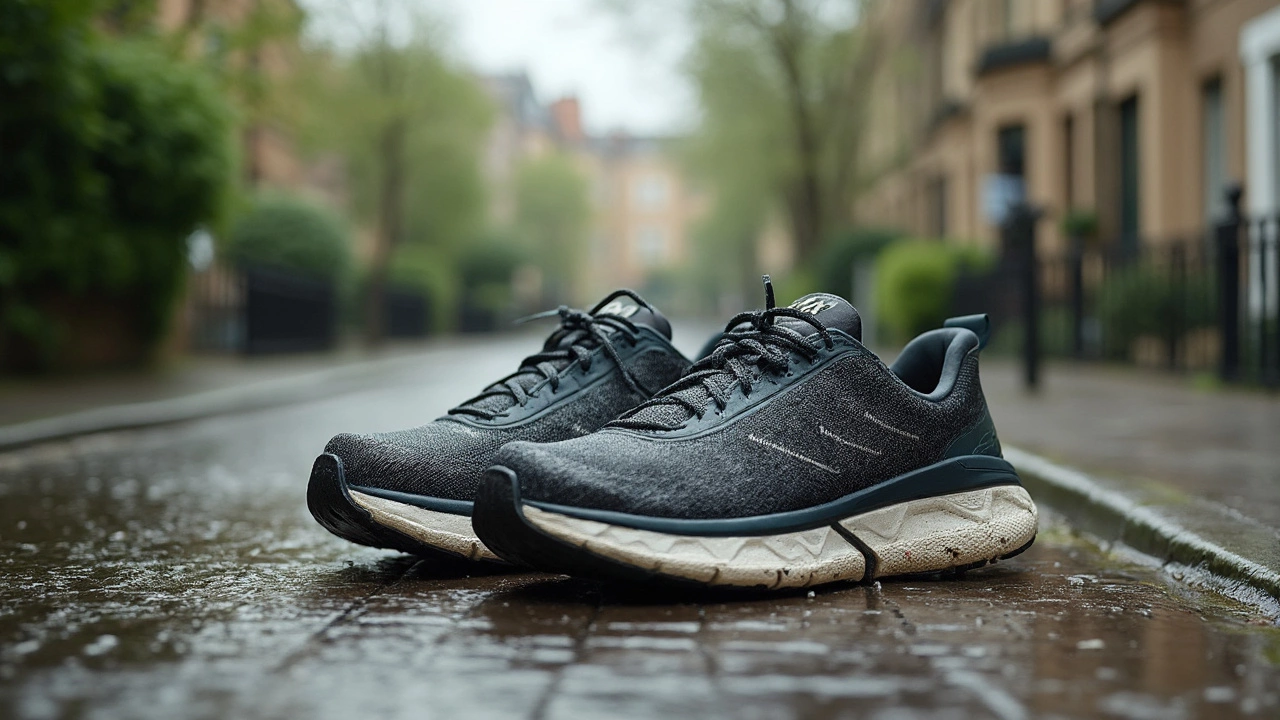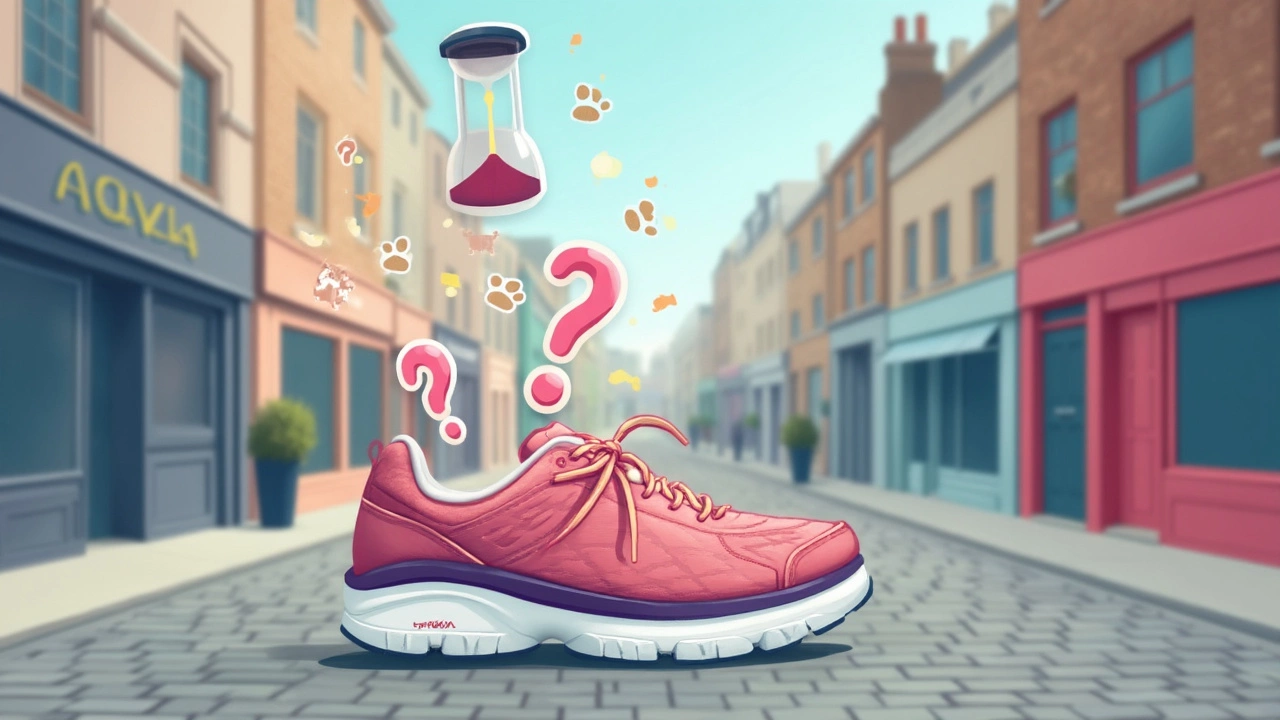How Many Miles Do You Wear Hokas? Find Your Perfect Shoe Lifespan

Ever found yourself staring at your Hokas, wondering if they’re past their prime? You’re definitely not alone. The biggest question runners have is: how many miles can these shoes really handle before it’s time for a new pair?
Hokas are designed to be plush and durable, but they aren't immortal—just ask my cat, Oliver, who thinks every pair is a scratching post. Depending on how and where you run, most Hokas last between 300 and 500 miles. That could be a few months if you're a marathon trainer, or much longer for casual joggers. But numbers aren’t the whole story—things like your stride, running surface, and even your weight can make a real difference in how your shoes wear.
Let’s ditch the guesswork and get into what really affects your Hoka’s lifespan and how to spot when it’s retirement time. Getting this right can spare you from mystery aches, tired legs, and—worst case—a trip to the physio.
- Average Lifespan of Hokas
- What Impacts Hoka Mileage?
- Signs Your Hokas Need Replacing
- Tips to Make Your Hokas Last
- Common Mistakes Runners Make
Average Lifespan of Hokas
Let’s get straight to it. Most runners get between 300 and 500 miles out of their Hoka running shoes. This range isn’t just pulled out of thin air—Hoka themselves mention it, and it’s backed up by everyday runners and coaches all over the place. That’s roughly the norm for high-cushion shoes like Hokas, but numbers can be a bit different depending on which model you have. For example, Hoka Clifton and Bondi (the popular, springy ones) usually give you mileage at the higher end if you stick to roads, but trail models like the Speedgoat can wear down faster on rough, rocky trails.
If you want a snapshot, here’s what you can typically expect from the main Hoka models:
| Hoka Model | Expected Mileage |
|---|---|
| Clifton | 400–500 miles |
| Bondi | 400–500 miles |
| Speedgoat (Trail) | 300–400 miles |
| Mach | 350–450 miles |
Hoka mileage really depends on how you run. If you mostly run on pavement at an easy pace, you’ll probably squeeze closer to 500 miles. But if you’re hammering out speedwork or pounding rocky trails, you might need a new pair sooner.
Here’s the quick math: if you’re logging about 20 miles each week, your Hokas will likely last at least four to six months. If you’re building up for a marathon or just love logging big miles, they’ll wear out sooner. It’s smart to jot down your mileage when you get a new pair—that way, you won’t be guessing when it’s time to retire them.
What Impacts Hoka Mileage?
If you’re clocking serious miles, it helps to know what really wears down your Hokas. First, running surface matters a ton. If you’re mostly hitting roads, your shoes usually last longer compared to pounding them on rocky trails. Trail runners often see their Hokas break down faster because rough ground chews up the outer sole and cushioning more quickly. On the flip side, treadmill runners usually get the maximum mileage, since the surface is flat and soft.
Your personal running style makes a difference, too. Heavier runners and those with a heavy heel strike will notice their midsole foam giving out sooner. Meanwhile, folks who weigh less or land midfoot get a little extra life out of every pair. Also, the frequency of your runs adds up—running every day versus three times a week can shorten the lifespan by a couple hundred miles.
Here’s a quick table that shows how different factors can change how many miles you get out of your Hokas:
| Factor | Average Hoka Mileage |
|---|---|
| Road running | 350-500 miles |
| Trail running | 250-400 miles |
| Treadmill running | 400-550 miles |
| Heavier runner (>180 lbs) | 250-400 miles |
| Lighter runner (<140 lbs) | 350-550 miles |
Other things matter, too. If you leave your shoes in a hot car or let them stay soggy after a rainy run, that foam and glue will break down faster. Rotating two pairs helps a lot—letting one recover while you run in the other actually slows down the wear and tear. Last tip: wearing your Hokas just for running (not errands or dog walking) will stretch out their lifespan.
- Run mostly on soft surfaces when you can.
- Dry shoes fully if they get wet.
- Consider shoe rotation for frequent runners.
Sticking to these simple habits can help you squeeze every extra mile from your Hokas before your feet start begging for a new pair. When it comes to Hoka mileage, small details really add up.

Signs Your Hokas Need Replacing
If you’re wondering if your Hokas are ready for retirement, you definitely don’t have to guess. Your feet (and your knees) might already be dropping hints. Ignoring these signs can mess up your runs and even lead to injuries. Here’s what you should actually look for:
- Hoka mileage update: If your shoes have clocked over 400 miles, start paying attention—most runners notice a clear dip in comfort and support after this mark.
- Flat or uneven midsoles: Press your thumb into the foam. If it feels hard, flat, or doesn’t bounce back, the cushion is gone.
- Worn out tread: Flip your Hokas over. If the grip pattern looks bald or smooth in places, traction will suffer—especially on wet roads.
- Blisters and new aches: Random blisters, sore knees, or new shin pain often means the shoes aren’t absorbing shock like they used to.
- Heel slippage or loose fit: If your Hokas feel loose even when laced tight, that might mean the uppers are stretched out past their prime.
Real study data found that old running shoes can lose more than 40% of their shock absorption after 500 miles. That’s a pretty big deal for your legs and joints.
| Sign | What You Notice |
|---|---|
| Worn tread | Smooth spots or bald patches |
| Flat midsole | No spring when pressing foam |
| Misshapen upper | Loose fit or stretched-out material |
| Pain or discomfort | New aches, blisters, sore feet or knees |
Don't just check one thing—use a mix of these checks whenever you clean your shoes or log your miles. Trust what your body tells you. If your feet start to complain during runs, it’s probably time to start shoe shopping again. Your joints will thank you later.
Tips to Make Your Hokas Last
If you love your Hokas, squeezing every mile out of them just makes sense. The good news? You can actually help your shoes last longer if you put in a tiny bit of care. Here’s exactly what works—and what to skip.
- Rotate your shoes: Don’t wear just one pair for every single run. If you alternate between two pairs (doesn’t have to be both Hokas), you’ll give the foam more time to relax and keep its shape. Researchers at the Luxembourg Institute of Health found rotating two pairs of running shoes lowers injury risk and slightly extends shoe lifespan.
- Keep them dry: Wet shoes break down faster. If they get soaked from rain or puddles, stuff them with old newspaper and let them air dry (never use direct heat—trust me on this one). It’ll help the materials bounce back and keep odors away.
- Use them just for running: It’s tempting to wear those comfy Hokas everywhere, but using them for errands, dog walks, or workouts adds extra miles you won’t track. Those “hidden” miles really add up.
- Store them cool and clean: Don’t toss your Hokas near radiators or in the trunk of your hot car. Extreme temps mess with the foam. A cool, dry spot gives them a longer life.
- Clean them gently: Muddy Hokas? Brush off dirt dry, then use mild soap and a sponge. No washing machines. They’ll fall apart way faster inside one (ask me how I know).
| Habit | Extra Miles | Potential Drawback |
|---|---|---|
| Rotating shoes | Up to 100-150 | Initial cost for second pair |
| Keeping shoes dry | 50-75 | None (except patience!) |
| No cross-use | 75+ | May need an extra pair for errands |
| Proper storage | 20-50 | Needs space at home |
| Gentle cleaning | 10-20 | Extra time after muddy runs |
To sum it up, these tips won’t turn your Hokas into forever shoes, but you can squeeze out a chunk of extra miles (sometimes over 100). That adds up if you’re watching your wallet or just can’t stand parting with your favorite pair. And hey, less waste is better for everyone.

Common Mistakes Runners Make
Lots of runners end up retiring their Hokas way too soon, or worse, way too late. Here’s where people usually slip up, and how to get it right so you don’t end up wasting money or risking injury.
- Hoka mileage guesswork: Plenty of folks just pick a random number or stick to whatever their running buddy told them. But everyone’s running style and body is different. Instead of using a set rule, keep an actual log—either in a notebook or with running apps—that tracks how many miles you put on each pair.
- Ignoring warning signs: If you start feeling new aches, soreness in your knees, shins, or feet, don’t brush it off. These might be clues that your shoes’ cushioning is shot, even if they still look fine on the outside.
- Not rotating shoes: Always running in the same pair breaks them down faster. Many running coaches recommend swapping between at least two pairs, especially if you run often. This lets each pair ‘recover’ a bit and can even help extend their lifespan.
- Washing them wrong: Hokas take a beating, but throwing them in the washing machine can weaken the glue and foam. Stick to gentle hand washing if they need cleaning, and always air dry.
- Letting looks fool you: Even if your shoes look okay, the midsole could be flattened. Pay attention to how they feel under your feet, not just how they look.
Keep these slip-ups in mind so you get the most out of every mile you run—and your wallet doesn’t take an unnecessary hit.
